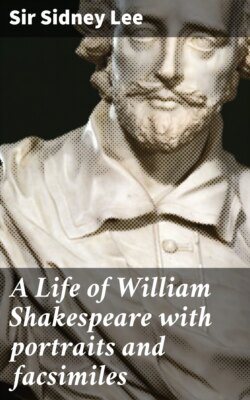Читать книгу A Life of William Shakespeare with portraits and facsimiles - Sir Sidney Lee - Страница 61
На сайте Литреса книга снята с продажи.
Marlowe’s influence in tragedy. ‘Richard III.’
ОглавлениеTable of Contents
Marlowe, who alone of Shakespeare’s contemporaries can be credited with exerting on his efforts in tragedy a really substantial influence, was in 1592 and 1593 at the zenith of his fame. Two of Shakespeare’s earliest historical tragedies, ‘Richard III’ and ‘Richard II,’ with the story of Shylock in his somewhat later comedy of the ‘Merchant of Venice,’ plainly disclose a conscious resolve to follow in Marlowe’s footsteps. In ‘Richard III’ Shakespeare, working single-handed, takes up the history of England near the point at which Marlowe and he, apparently working in partnership, left it in the third part of ‘Henry VI.’ The subject was already familiar to dramatists, but Shakespeare sought his materials in the ‘Chronicle’ of Holinshed. A Latin piece, by Dr. Thomas Legge, had been in favour with academic audiences since 1579, and in 1594 the ‘True Tragedie of Richard III’ from some other pen was published anonymously; but Shakespeare’s piece bears little resemblance to either. Throughout Shakespeare’s ‘Richard III’ the effort to emulate Marlowe is undeniable. The tragedy is, says Mr. Swinburne, ‘as fiery in passion, as single in purpose, as rhetorical often, though never so inflated in expression, as Marlowe’s “Tamburlaine” itself.’ The turbulent piece was naturally popular. Burbage’s impersonation of the hero was one of his most effective performances, and his vigorous enunciation of ‘A horse, a horse! my kingdom for a horse!’ gave the line proverbial currency.
